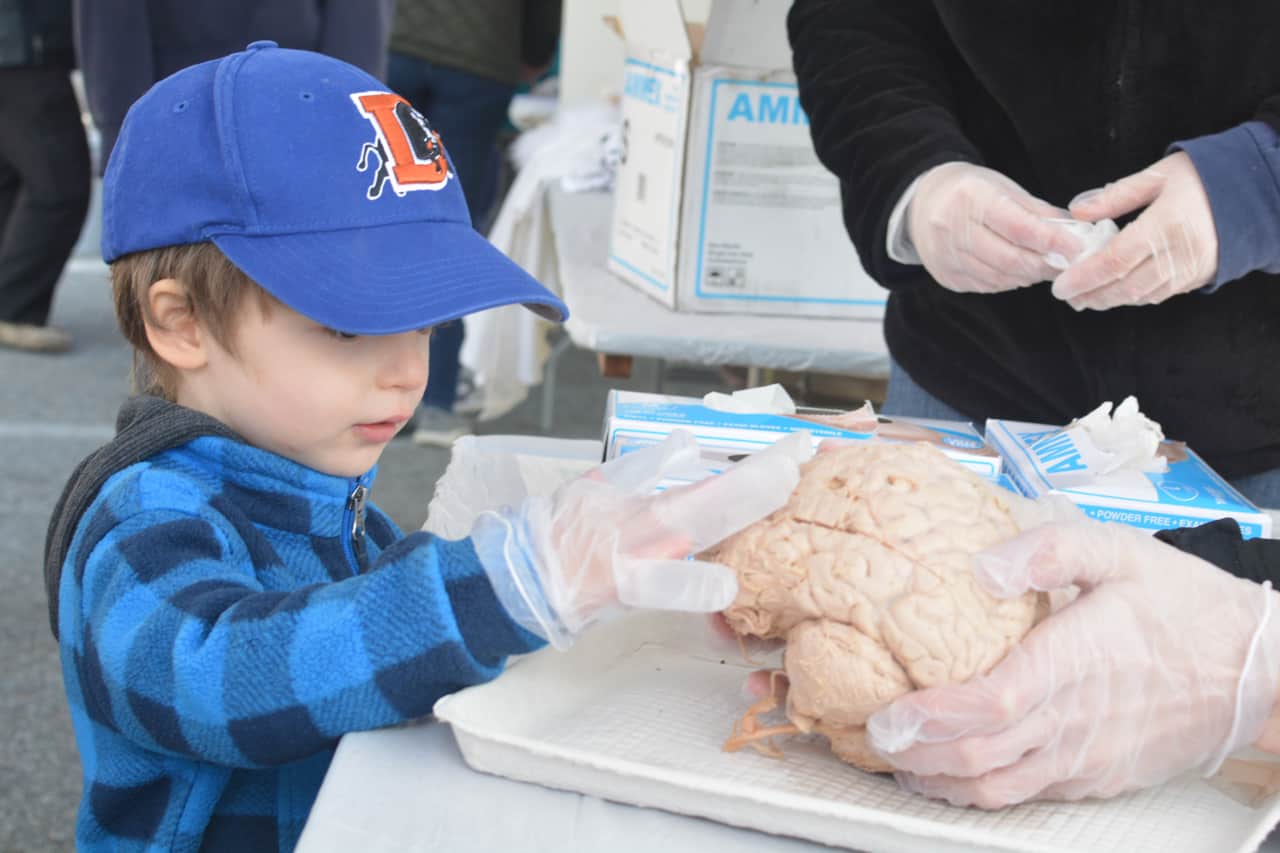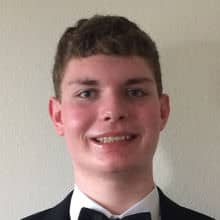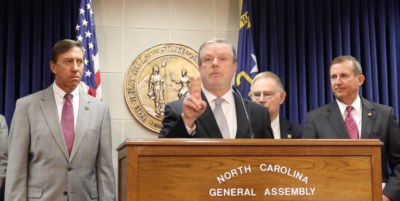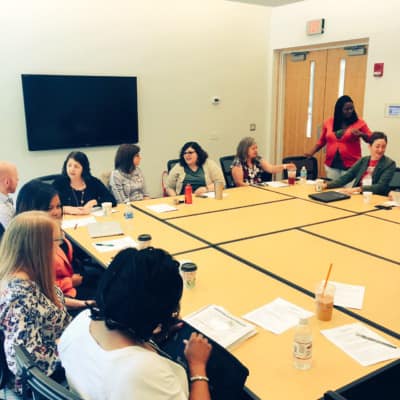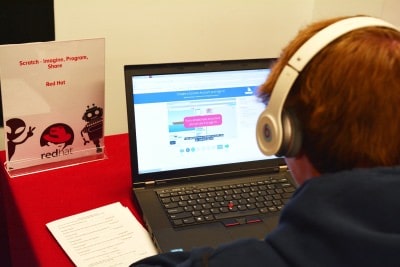US2020 RTP‘s “RTPi3: Ignite, Innovate, and Inspire Challenge” essay contest was open to high school students in five Innovate NC communities: Asheville, Greensboro, Pembroke, Wilmington, and Wilson. Students were asked, “If you had no obstacles and unlimited resources in pursuing a STEM career, how would you ignite an idea, show great innovation or inspire someone else? How would you make a difference in your community?” The author of the winning essay receives a $2500 technology package of Microsoft products and the second-place winner receives a tablet and headphones. This week, EdNC will feature the second- and first-place essays.
If I had no obstacles and unlimited resources in pursuing a STEM career, I would prepare by advancing my education with a B.S. in biochemistry, a M.S. in genetics, a M.S. in biotechnology, and a PhD in genetic embryology. I am already looking at colleges that will allow me to participate in undergraduate research in order to get early exposure in such fields. Using this background, I would (and hopefully will) make a difference in my community and the world by discovering more of the benefits that scientific understanding of key genetic processes and their control can offer. The one of these processes of which I am already aware and specifically fascinated by is telomerase’s reparative effect on the telomeres. I think that this can be used to lengthen the human lifespan and/or lessen the negative effects of aging, which would have many obvious and less obvious impacts on my community and communities the world over.
To begin, telomeres are noncoding stretches of DNA that act as caps on chromosomes, protecting them. Over time, mistakes in replication shorten the telomeres to the point where the mistakes begin to affect active parts of the chromosomes themselves. In other words, over the course of a person’s life, cells divide constantly for diverse and essential reasons, such as repairing wounds. Unfortunately, when the cell’s genetic material is being copied, mistakes are made, most often at the ends of the chromosomes. The telomeres evolved to reduce the impact of these inevitable errors, acting as a buffer area of DNA at the chromosomes’ ends that can be lost without affecting any active genes. After adolescence, one of the last times the body upregulates enzymes to repair these buffers, the telomeres’ size dwindles and the errors in replication begin to alter or delete portions of active genes. This leads to many of the disadvantages of the aging processes. I am particularly interested in the enzyme telomerase, which the human body produces early in development, because of its ability to stave off and reverse the aforementioned telomere degradation effect even while an embryo is undergoing the rapid division needed to develop an entire body.
I am particularly interested in the enzyme telomerase, which the human body produces early in development, because of its ability to stave off and reverse the aforementioned telomere degradation effect even while an embryo is undergoing the rapid division needed to develop an entire body.
If I can help develop a feasible method of mass production of the telomerase enzyme, similar to the insulin enzyme produced by modified bacteria and yeast, and if scientists develop an effective whole body drug delivery molecule, then I hypothesize that the downsides of aging will be mediated and the human lifespan could be considerably lengthened. Examples of such mediation will likely include the delay and prevention of cancers that develop later in life and slowed neural degeneration, which manifests in short-term memory loss that affects aging people. Writers and movie directors have explored this idea of improved maturation and slowed aging to a degree in some of their works of fiction, such as Jaco Van Dormael’s 2009 movie Mr. Nobody (a sci-fi drama following the last “mortal” man on a future earth, the only person left who has not been “telomerized”), but I plan to introduce or advance real research in this direction.
The obvious difference that widespread application of the biotechnology would have are the innate advantages of humans being able to live longer and stay stronger as a society. Within two generations or less, the optimal period for initiation of the treatment would likely have been determined and improvements to the treatment itself would be underway. The other less vague and less obvious differences of such an altered society could be both beneficial and damaging. The benefits include less fear of forgetting who one’s family is and of feeling one’s body slowly fail him/her, making older people much more at ease. Some damaging ramifications would be the devaluation of the companies and workers in the retirement and nursing home corner of the economy as the first generation of longer living people do not get old (as much or at all) by their seventies, eighties, nineties, and likely further. Even so, this depression in this area of the economy would normalize within a relatively short period as the industry adjusted to older members of societies’ new condition and needs.
Improved and/or reduced aging would have an impact in my community particularly due to a high percentage and percent increase of people over 65. Asheville in particular, is touted as an idyllic place to spend one’s retired years, with a small population, beautiful sights, and a diverse populus. Between the 2000 census and 2010 census, Buncombe County’s 65+ population increased by 19.89 percent, neighboring Henderson County’s by 23.39, and nearby Transylvania County’s by 35.91 percent 1. If this trend continues, the sheer number of older people no longer contributing to society could put a strain on the area. The introduction of my telomere lengthening biotech would allow these people to contribute to society longer and create less stress in these and other similar areas.
As I have demonstrated, I would (and hopefully will) make a difference in my community and the world by researching areas of genetics lacking in scientific understanding of inherent benefits. The main topic in which I am fairly well versed and specifically fascinated by is telomerase, or more specifically, its reparative effect on the telomeres. I think that this can be exploited to allow humans to live longer and with slower or less degrading aging, which would have many impacts in my community and societies the world over. In this way, I would use the aforementioned lack of obstacles and unlimited resources to impact my community and the world as a whole on a virtually unprecedented level.
RTPi3: Ignite, Innovate, and Inspire Challenge
Ignite, Innovate, and Inspire Challenge: Second-place essay
Ignite, Innovate, and Inspire Challenge: First-place essay
